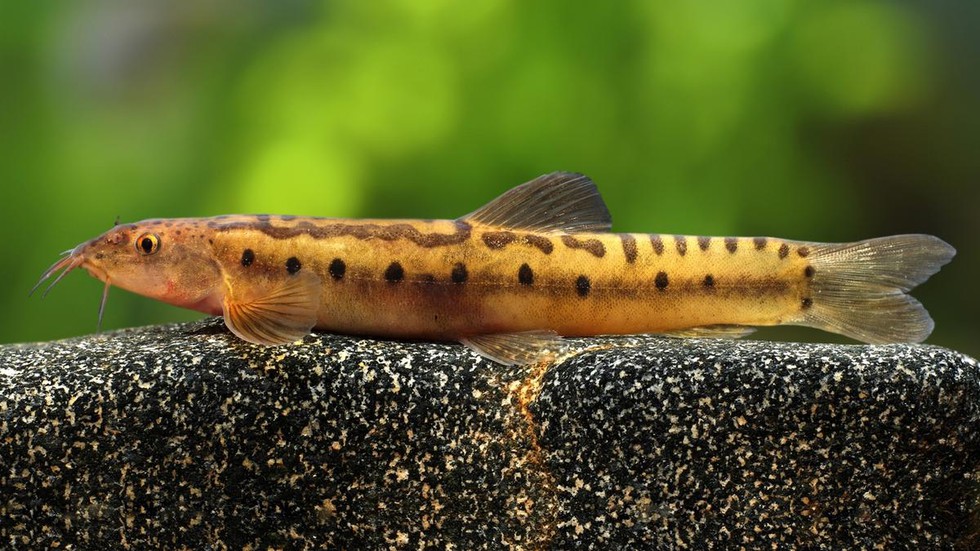
About Genus Koima:
- The generic name, Koima is derived from Malayalam and is the vernacular word used for loaches.
- It encompasses two known species that were previously assigned under the genus Nemacheilus.
- Features of genus Koima
- It has a unique colour pattern comprising a yellowish-brown ground colour, single row of black spots on lateral line, all fins hyaline, and absence of a uniform banding pattern on dorsal side.
- Habitat: Kunthi, Bhavani, Moyar, Kabini, and Pambar rivers in the Western Ghats.
Species belongs to Genus koima
- Koima remadevii:
- It typically inhabits swift-flowing riparian streams with substrates comprising rocks, boulders, and gravel, with sand and silt patches scattered throughout.
- Koima remadevii thrives in fast-flowing streams with rocky substrates. These fish seek shelter in the gaps between rocks and beneath boulders, finding protection from strong currents.
- Currently it is only known from its type locality in the Kunthi river inside Silent Valley National Park.
- Koima monilis: It inhabits various tributaries of the Cauvery river, occupying microhabitats ranging from large rivers to small, fast-flowing streams at elevations between 350 and 800 m.
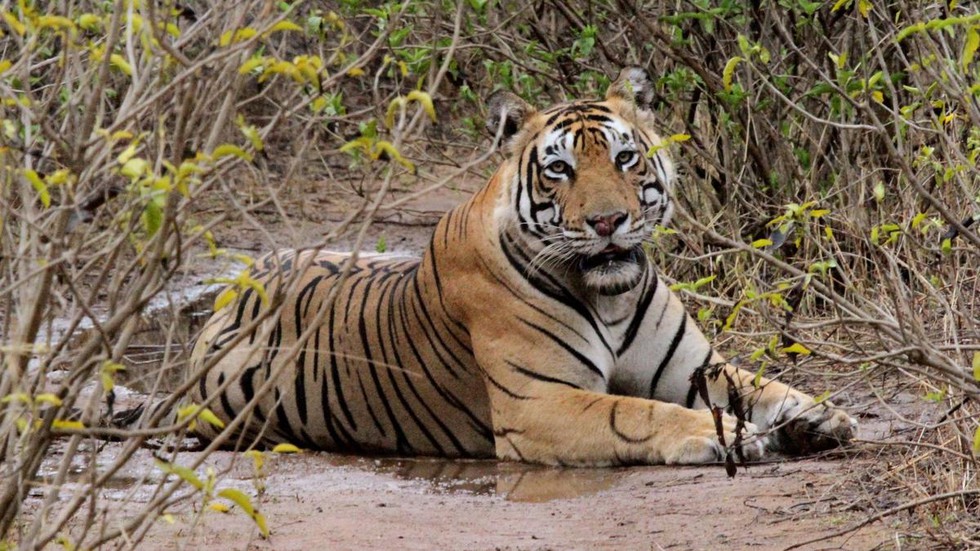
About Guru Ghasidas-Tamor Pingla Tiger Reserve:
- It is located in the northern part of the state Chhattisgarh, bordering Madhya Pradesh and Jharkhand.
- It is the third largest tiger reserve in the country after Nagarjunasagar-Srisailam Tiger Reserve in Andhra Pradesh and Manas Tiger Reserve in Assam.
- This tiger reserve is connected to the Bandhavgarh Tiger Reserve in Madhya Pradesh to the West and Palamau Tiger Reserve in Jharkhand to the East.
- It is nestled in the Chota Nagpur plateau and partly in Baghelkhand plateau.
- It is contiguous with the Sanjay Dubri Tiger Reserve in Madhya Pradesh.
- Rivers:It serves as the origin of significant rivers such as Hasdeo Gopad and Baranga and a catchment area for rivers like Neur, Bijadhur, Banas, Rehand, and numerous smaller rivers and rivulets.
- Terrain: It is blessed with varied terrains, dense forests, streams and rivers favourable for harbouring a rich faunal diversity and contains critical habitats for the tiger.
- Fauna: A total of 753 species, including 365 invertebrates and 388 vertebrates, have been documented here by the Zoological Survey of India.
- Other Tigers reserves in Chhattisgarh: Udanti-Sitanadi, Achanakmar, and Indravati Reserves.

About Grievance Redressal Assessment And Index:
- It was conceptualized and designed by the Department of Administrative Reforms and Public Grievances (DARPG), Government of India based on the recommendation of Parliamentary Standing Committee of Ministry of Personnel, Public Grievances and Pensions.
- Objective: It has an objective to present organization-wise comparative picture and provide valuable insights about strengths and areas of improvement regarding grievance redressal mechanism.
- The first edition of GRAI 2022 was released on 21 June 2023.
- Eighty-nine Central Ministries and Departments were assessed and ranked based on a comprehensive index in the dimensions of (1) Efficiency, (2) Feedback, (3) Domain and (4) Organisational Commitment and corresponding 11 indicators.
- To compute the index, data between January and December 2023 was used from the Centralised Public Grievance Redressal and Management System (CPGRAMS).
- Department of Agriculture and Farmers Welfare, O/o the Comptroller & Auditor General of India and Department of Investment & Public Asset Management have topped the rankings in Group A, B and C respectively.
- This report presents a two-dimensional (vertical and horizontal) analysis of the root causes of effective redressal of grievances of each Ministries and Departments in an easily discernible colour coded analysis.
- The report also presents a brief description of technical partners DARPG has engaged to facilitate the Ministries and Departments to optimally utilize CPGRAMS as a means of effective grievance redressal media.
- This report presents a clear roadmap with an advisory for the Ministries and Departments to leverage CPGRAMS and its features like IGMS 2.0, TreeDashboard, etc., to enhance grievance redressal.
- The roadmap for improvement emphasizes integrating advanced technologies like AI and ML for data analysis, predictive analytics and preventive measures while revising ATR formats for better reporting.
- Capacity building for GROs, enhancing accountability through audits and extending CPGRAMS integration to the third-tier of government are key recommendations.
4. One Day One Genome Initiative
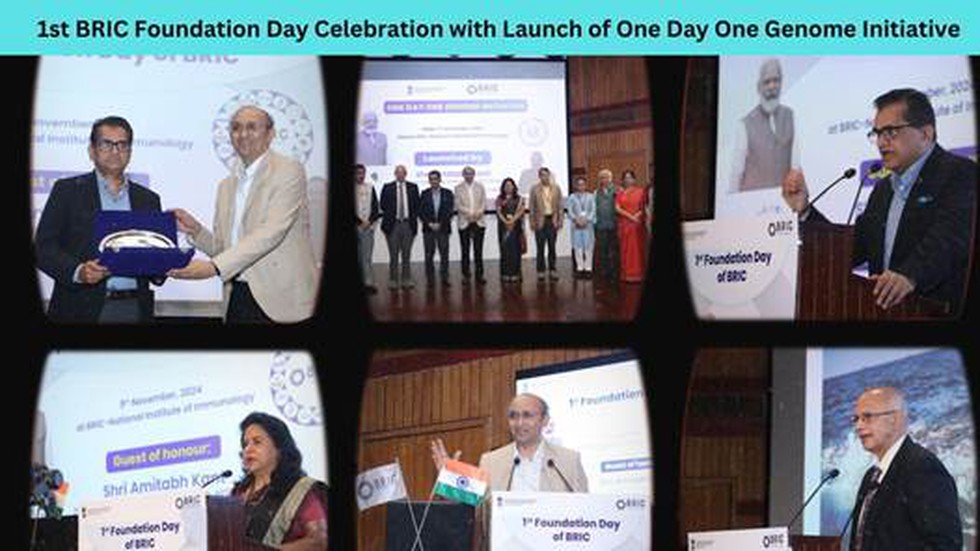
About One Day One Genome Initiative:
- It will highlight the unique bacterial species found in our country and emphasize their critical roles in environment, agriculture and human health.
- This initiative is coordinated by Biotechnology Research and Innovation Council-National Institute of Biomedical Genomics (BRIC-NIBMG) an institute of the Department of Biotechnology.
- This initiative aims to release a fully annotated bacteriological genome isolated in the country freely available to the public.
- This will be complemented with a detailed graphical summary, infographics and genome assembly/annotation details.
- These documents will thus give an idea about the scientific and industrial use of these microbes.
- Consequently, microbial genomics data will become more accessible to the general public, scientific researchers and thereby stimulate discussions; innovations directly benefit the entire community and ecosystem.
Role of microorganisms
- Microorganisms are crucial for our ecosystem. They play an important role in all biogeochemical cycles, soil formation, mineral purification, degradation of organic wastes and toxic pollutants along with methane production.
- Cumulatively they help to maintain the homeostasis in our planet.
- In agriculture, they help in nutrient cycling, nitrogen fixation, maintaining soil fertility, controlling pests and weeds and stress responses.
- Microorganisms are symbiotically associated with plants and help them in nutrient and water uptake.
- There are many more microbial cells than the number of human cells in a human body. They are essential for our digestion, immunity and even mental health.
- All infectious diseases are mainly caused by pathogenic microorganisms. On the other hand, non-pathogenic microorganisms are indispensable for our defense against infectious diseases.
5. Thai sacbrood Virus

About Thai sacbrood Virus:
- It is one of the greatest threats facing the Asiatic honey bee.
- The particular viral strain that attacks western honey bees is less virulent.
- The disease caused by the virus’s infection kills the bees’ larvae. The particular viral strain that attacks western honey bees is less virulent.
- Geographical spread: In 1991-1992, a Thai sacbrood virus outbreak devastated around 90% of Asiatic honey bee colonies in South India and reemerged in 2021 in Telangana. The virus has been reported from other parts of the world, including China and Vietnam.
Key facts about Indian Bees
- India hosts more than 700 bee species, including four indigenous honey bees: Asiatic honey bee (Apis cerana indica), giant rock bee (Apis dorsata), dwarf honey bee (Apis florea), and the stingless bee (sp. Trigona). Western honey bees were introduced in India in 1983 to increase the country’s honey yield.
Do you know?
- Pathogen spillover: An event in which a species-specific pathogen establishes infection in a novel susceptible host. g: transmission of Nipah virus from bats into pigs.
- Pathogen Spillback: A specific instance of spillover that occurs when a pathogen is transmitted from a novel host back into an origin host. g.: Transmission of SARS-CoV-2 from humans into wild-caught bats.
6. Who are the Maori?

About Maori:
- The Maori Tribe is an indigenous tribe who have inhabited New Zealand for centuries.
- Maori were originally settled primarily in the northern parts of the North Island, New Zealand. The South Island was much more sparsely settled.
- Culturally, they are Polynesians, most closely related to eastern Polynesians.
- Maori culture has endured centuries of torture and struggle, first in the hands of the ‘Crown’, and later others who wished to claim a spot on their land.
- Language: Maori is classified as part of the Polynesian Group of the Eastern Oceanic Branch of the Austronesian languages.
- Approximately one-third of the Maori still speak their ancestral language, with the vast majority fluent in English as well.
- According to data from the 2013 census, there were 598,605 Māori in the country, making up 9 percent of the total population.
- Their distinctive costumes serve as a visual expression of their heritage, reflecting their deep connection to the land and ancestral spirits.
- The most famous aspect of Maori culture is the Haka, a powerful war dance known for its intensity, facial expressions, and rhythm.
- Another very prominent identity of the Maori people are their tattoos, which can be seen on their faces.
- These tattoos are called ‘ta moko’ which is a traditional Maori art form, deeply symbolic and respected.
- Ta moko designs are unique to each person and are a depiction of their social status, their genealogy, what they have done for society, and more.
7. What are Cluster Munitions?
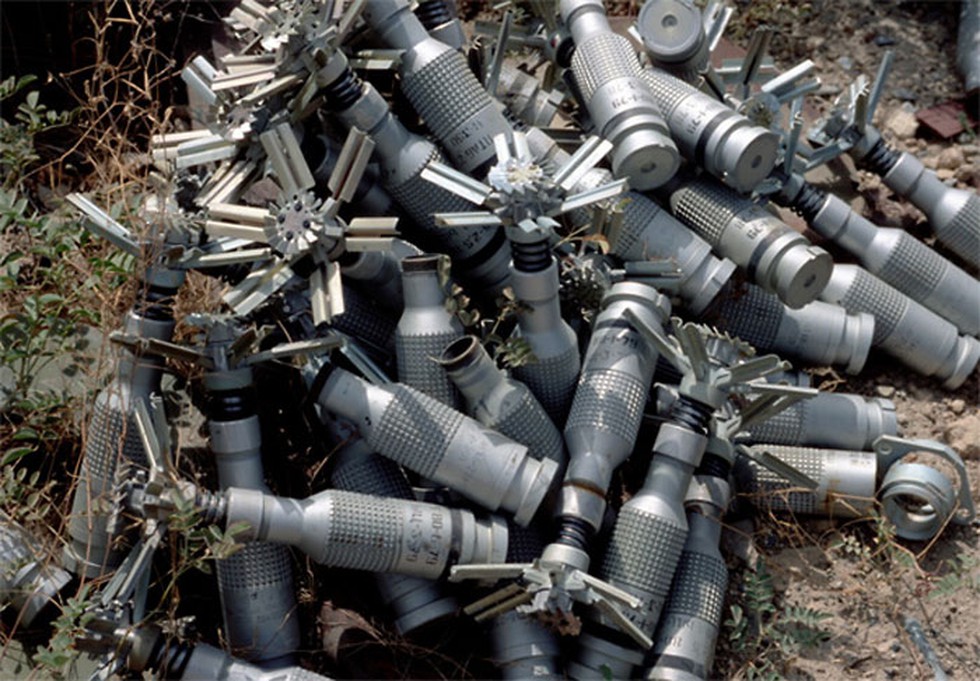
About Cluster Munitions:
- Cluster munitions, or cluster bombs, are weapons which, as the name suggests, deliver clusters of smaller explosive submunitions onto a target.
- Depending on the model, the number of submunitions can vary from several to more than 600.
- Cluster munitions can be delivered by aircraft, artillery, and missiles.
- Most submunitions are intended to explode on impact. The vast majority are free-falling, meaning that they are not individually guided towards a target.
- However, many submunitions fail to explode on initial impact, leaving duds that act like landmines, posing a threat to civilians for years and even decades.
- They were developed in World War II and are part of many governments’ weapons stockpiles.
- Their main purpose was to destroy multiple military targets dispersed over a wide area, such as tank or infantry formations, and to kill or injure combatants.
- The Convention on Cluster Munitions (CCM) prohibits under any circumstances the use, development, production, acquisition, stockpiling, and transfer of cluster munitions, as well as the assistance or encouragement of anyone to engage in prohibited activities.
- More than 120 states have joined the Convention. Notable exceptions include the United States, Russia, Ukraine, Israel, India, and China.
8. What is the Eastern Maritime Corridor (EMC)?

About Eastern Maritime Corridor (EMC):
- The Chennai-Vladivostok Sea route, also known as the EMC, will link Russia's east coast with South India.
- The EMC offers a significant reduction in both cargo transit time between India and the Russian Far East of up to 16 days and in distance by up to 40%, promising substantial efficiency gains in transportation.
- Currently, the route from Mumbai to St. Petersburg, Russia, via the Western Sea Route and Suez Canal spans 8,675 nautical miles or 16,066 km.
- At present, a large container ship from India takes around 40 days to reach Russia's Far East region through Europe.
- In contrast, the distance from Chennai to Vladivostok via the EMC is significantly shorter, at only 5,647 nautical miles, or 10,458 km.
- This translates to substantial savings of 5,608 km in distance, providing significant reductions in logistical costs and enhancing the efficiency of cargo transportation between Russia, India, and Asia.
- En route, EMC passes through the Sea of Japan, the East China Sea, the South China Sea, the Malacca Straits, the Andaman Sea, and the Bay of Bengal.
The route includes port options if needed, such as Dalian, Shanghai, Hong Kong, Ho Chi Minh City, Singapore, Kuala Lumpur, Bangkok, Dhaka, Colombo, and Chennai.
9. What is GSAT-N2 (GSAT-20)?

About GSAT-N2 (GSAT-20):
- It is India’s advanced communication satellite.
- It was developed by New Space India Limited (NSIL), the commercial arm of ISRO under the Department of Space.
- It was launched onboard SpaceX’s Falcon-9 rocket into a geosynchronous transfer orbit.
- It is designed to provide data and internet services to remote regions and enable in-flight Internet connectivity across the Indian subcontinent.
- It will provide significant data transmission capacity, particularly for India's Smart Cities Mission.
- Features:
- It is a high-throughput communication satellite operating in the Ka-band.
- The satellite is equipped with multiple spot beams and is designed to support a large user base, utilizing small user terminals.
- GSAT-N2 features 32 user beams—8 narrow spot beams over the Northeast region and 24 wide spot beams covering the rest of India.
- These beams will be supported by hub stations across mainland India.
- The satellite’s Ka-band high-throughput communication payload provides a throughput of around 48 Gbps.
- The GSAT-N2 satellite, with a lift-off mass of 4,700 kg, has a mission life of 14 years.
- This is India’s highest throughput satellite and the only one exclusively operating in the highly sought-after Ka-band.
Why was the Falcon-9 rocket chosen?
- While ISRO’s Mark-3 launch vehicle can place up to 4,000 kg into a geostationary transfer orbit, the GSAT-N2’s weight of 4,700 kg required a different solution.
- As a result, ISRO turned to SpaceX’s launch vehicle for the mission, marking ISRO’s first commercial collaboration with SpaceX.
10. Key Facts about Sudan
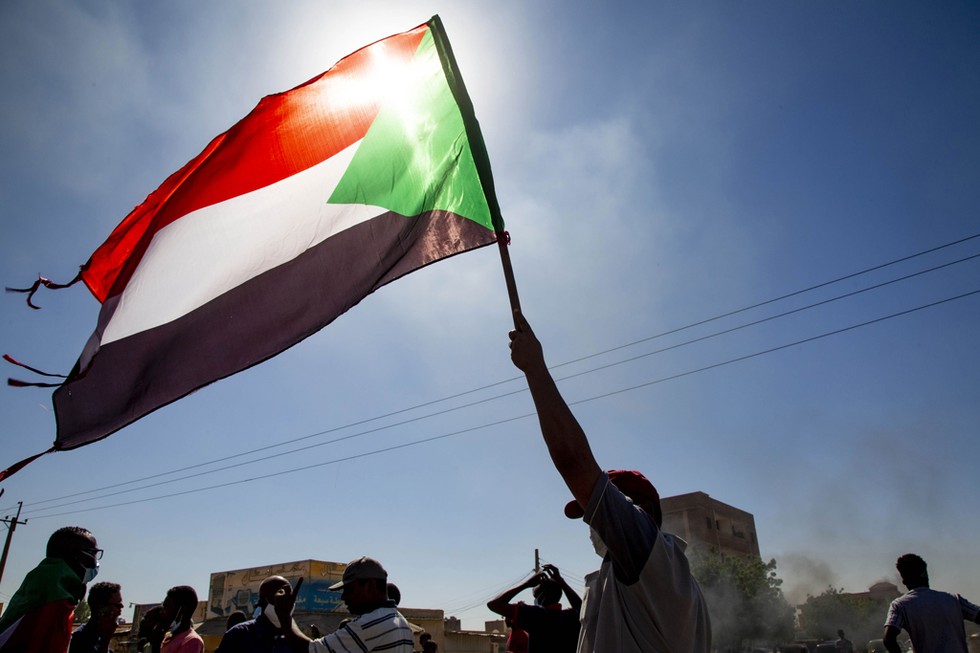
About Sudan:
- It is a country located in northeastern Africa.
- Bordering Countries: South Sudan, Ethiopia, Eritrea, Egypt, Libya, Chad, and the Central African Republic.
- It borders the Sahara on the north and extends southward to the forests of West Africa and the Congo River basin.
- Sudan also has a significant coastline along the Red Sea.
- This narrow strip of water gives vital access to the Indian Ocean as well as the Mediterranean Sea through the Suez Canal.
- Capital: Sudan’s capital, Khartoum, is located roughly in the centre of the country, at the junction of the Blue Nile and White Nile rivers.
- Currency: Sudanese pounds (SDG)
- Colonial Rule:
- Following Egyptian occupation early in the 19th century, an agreement in 1899 set up a joint British-Egyptian government in Sudan, but it was effectively a British colony.
- Military regimes favoring Islamic-oriented governments have dominated national politics since Sudan gained independence from Anglo-Egyptian co-rule in 1956.
- For more than a century, Sudan—first as a colonial holding, then as an independent country—included its neighbour South Sudan, home to many sub-Saharan African ethnic groups.
- Prior to the secession of the south in 2011, Sudan was the largest African country, with an area that represented more than 8 percent of the African continent and almost 2 percent of the world’s total land area.
- Much of Sudan consists of deserts and arid grasslands with little in the way of vegetation. Massive plains and plateaus cover most of the nation.
Current Crisis:
- A power struggle between the Sudanese army and the paramilitary Rapid Support Forces broke out in April 2023 ahead of a planned transition to civilian rule, killing thousands and triggering the world's largest displacement crisis.
- One-third of the population is facing acute food insecurity, with numbers projected to increase to 40 percent of the population.


























































































































































.png)
.png)
.png)
.png)
.png)


.png)
.png)
.png)





.png)
.png)






.png)
.png)
.png)
.png)
.png)
.png)
.png)
.png)
.png)

.png)







.png)
.png)


.png)
.png)
.png)


.png)

.png)
.png)





.jpg)

.png)
.png)


.png)

.png)
.png)
.png)

.jpg)

.jpg)


.png)

.png)
.png)
.png)
.png)
.png)
.png)
.png)
.png)
.png)
.png)




.png)

.png)





.png)
.png)
.png)
.png)
.png)
.png)
.png)
.png)
.png)
.png)
.jpg)
.jpg)

.png)
.png)
.png)
.png)
.png)
.png)
.png)
.png)
.png)
.png)
.png)
.png)
.png)
.png)
.png)
.png)
.png)
.png)
.png)
.png)
.png)
.png)



.png)
.png)

.jpg)
.jpg)


.jpg)
.jpg)
.jpg)
.jpg)
.jpg)

.jpg)








.jpg)
.jpg)
.jpg)
.jpg)
.jpg)

















.jpg)
.jpg)







.jpg)


















.jpg)
.jpg)






























































































.jpg)
.jpg)


























.jpg)

.jpg)










.jpg)








.jpg)




.jpg)










.jpg)


















.jpg)












































.jpg)














.jpg)
.jpg)
.jpg)





.jpg)

.jpg)
.jpg)





































































.jpg)


































.jpg)
.jpg)
















































.jpg)












.jpg)


.jpg)




.jpg)
.jpg)
.jpg)

.jpg)
.jpg)
.jpg)
.jpg)

.jpg)
.jpg)
.jpg)

.jpg)
.jpg)
.jpg)
.jpg)
.jpg)
.jpg)
.jpg)
.jpg)

.jpg)


.jpg)
.jpg)
.jpg)
.jpg)
.jpg)
.jpg)
.jpg)
.jpg)
.jpg)
.jpg)











.jpg)
.jpg)





.jpg)
.jpg)
.jpg)
























.jpg)
























.jpg)









.jpg)
.jpg)







.jpg)
.jpg)









































.jpg)
.jpg)
.jpg)
.jpg)
.jpg)

.jpg)
.jpg)
.jpg)
.jpg)
.jpg)


.jpg)
.jpg)
.jpg)
.jpg)
.jpg)

.jpg)
.jpg)
.jpg)
.jpg)
.jpg)
.jpg)
.jpg)
.jpg)
.jpg)
.jpg)
.png)

.png)
.png)

.png)
.png)
.png)
.png)


.jpg)
.jpg)

.jpg)
.jpg)
.jpg)

.png)
.png)
.png)
.png)
.png)
.png)
.png)

.png)
.png)
.png)
.png)
.png)
.png)
.png)
.png)
.png)
.png)





































































-min.png)



.png)




.png)








































